Chobe National Park
Chobe National Park
Our home and a wildlife photography paradise
Table of Contents
- Where is the Chobe National Park?
- How big is the Chobe National Park?
- Chobe National Park Map
- Is Savute in the Chobe National Park?
- Where does the Chobe River start?
- Is the Chobe the same as the Kwando (Cuando) River?
- Where do the Chobe River and the Zambezi meet?
- When does the Chobe River flood?
- What safari activities can you do in The Chobe National Park?
- What is The Chobe National Park known for?
- What Big Cats can you see in Chobe, Botswana?
- What birds will you see in The Chobe?
- Can you go off-road in The Chobe National Park?
- Can you do night drives in The Chobe National Park?
- Can you do a walking safari in The Chobe National Park?
- Why is the Chobe National Park so good for wildlife photography?
- How far is the Chobe from Victoria Falls?
- Can you swim in the Chobe River?
- When is the best time to visit Chobe?
- What animal are you most likely to see on a Chobe safari?
The Chobe National Park is situated in Botswana, Southern Africa and is the third-largest safari national park in the country. The park is, of course, named after the Chobe River which runs along the park’s northern boundary and forms the border between Botswana and Namibia. Kasane is known as the gateway to the Chobe and for good reason! Any expedition into the Chobe National Park generally starts by landing at Kasane Airport (BBK) or planning your self-drive route to the town. If you’d like to see a little more you could always fly into Victoria Falls Airport and start your adventure there.
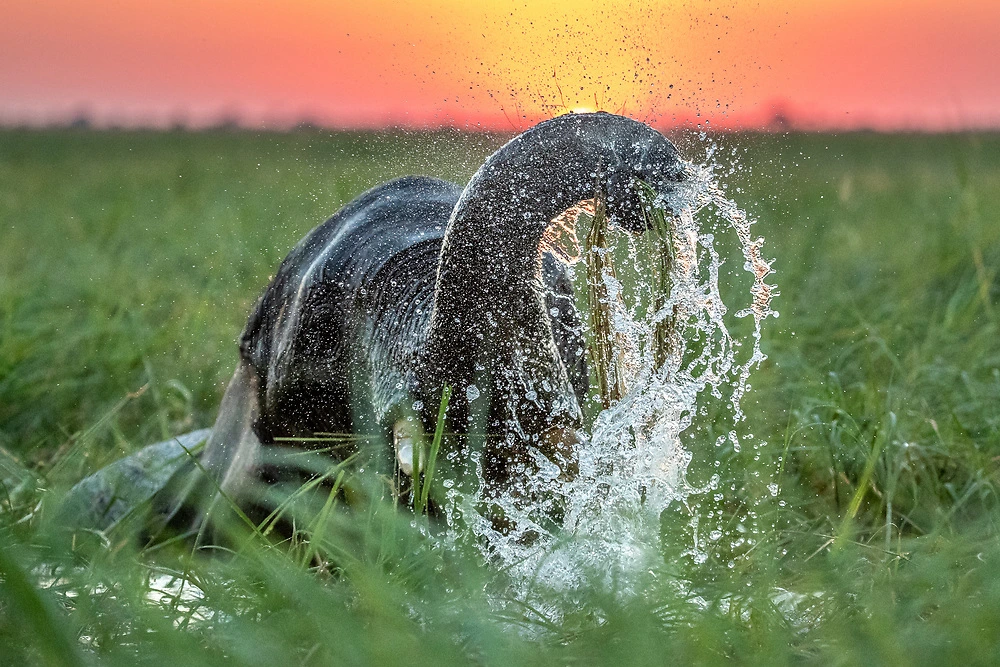
Elephant at sunset on the Chobe River © Sabine Stols
Botswana’s Chobe National park sprawls across floodplains, swamps, and riverine woodlands and is approximately 11,700 km². As you can see, this means that Chobe National Park dominates the Chobe region in the northeastern corner of Botswana. Africa is really showing off with this sprawling park and its wildlife! A perfect safari destination.
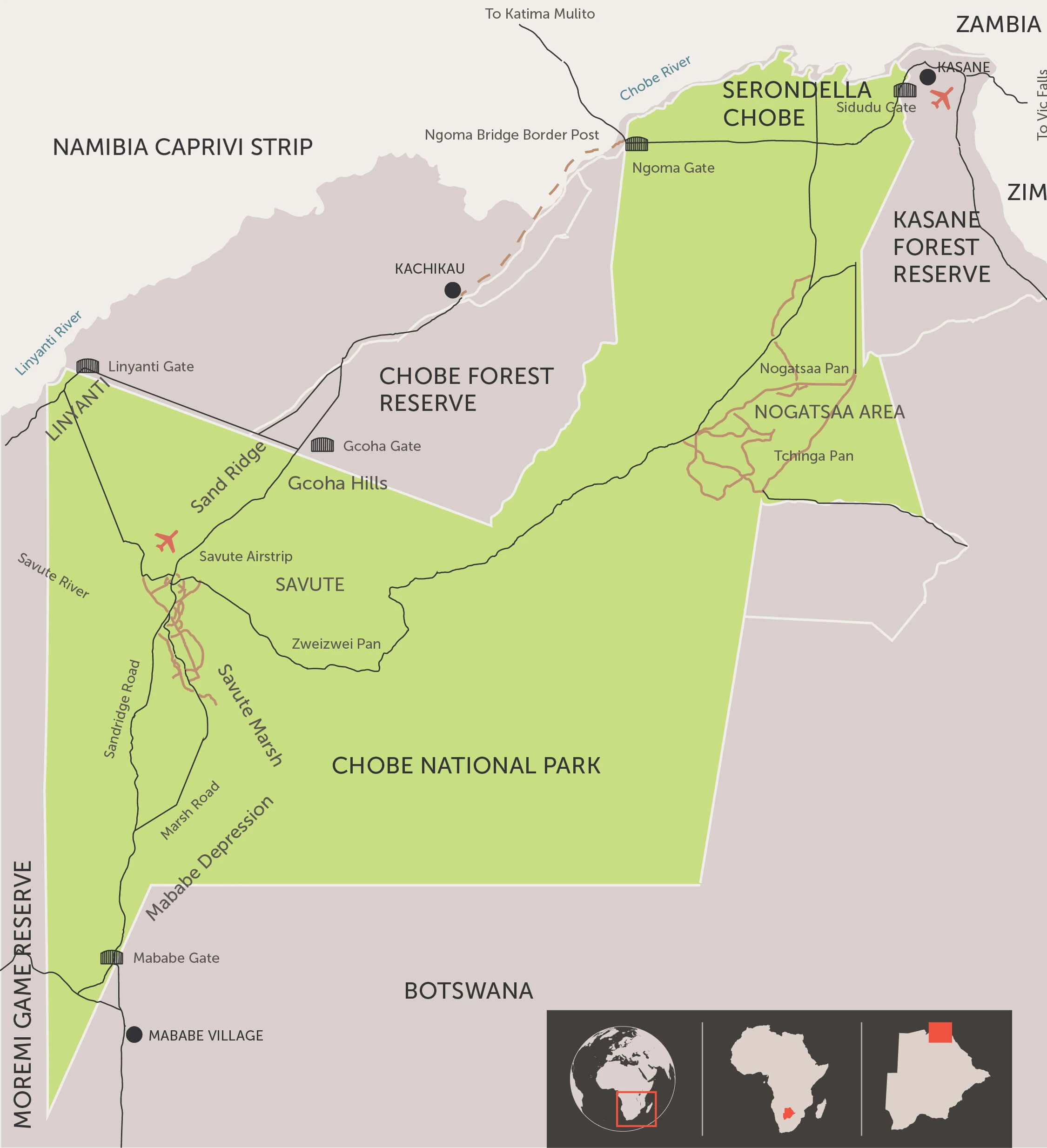
© AndBeyond
Chobe National Park can be structurally divided into four relatively distinct safari areas. Each of these areas has a very unique character and highlights different areas of vegetation and wildlife. Simply put, the park can be seen as Chobe Riverfront on the northeastern edge of the park, to the northwest corner there is Linyanti marsh and then south would be Savute and then Ngwezumba pans (Nogatsaa area).
So yes, Savute does form a remote and beautifully wild corner of the Chobe National Park and for this reason, is a personal favourite for many of the Pangolin Photo Safari hosts, especially when photographing the savuti marsh area. PS: If you can, the Nogatsaa grass woodland area is not to be missed on your safari.

Two lions at Savute © William Steel
The Chobe River begins all the way up in Angola where it is known as the Kwando River. This river flows southeast and forms the nearly 225 km boundary between Angola and Zambia. Towards the end, this river reaches the northern entrance boundary of the Caprivi Strip in Namibia and thereafter spreads into the Linyanti Marshes. The marshes, which cover approximately 1,425 km² (including Lake Liambezi) drain east towards the Zambezi, both rivers sharing the same floodplain. The Zambezi then clears at the Mambova Rapids and the Kwando (known as the Chobe River) then clears at the Kasane Rapids.
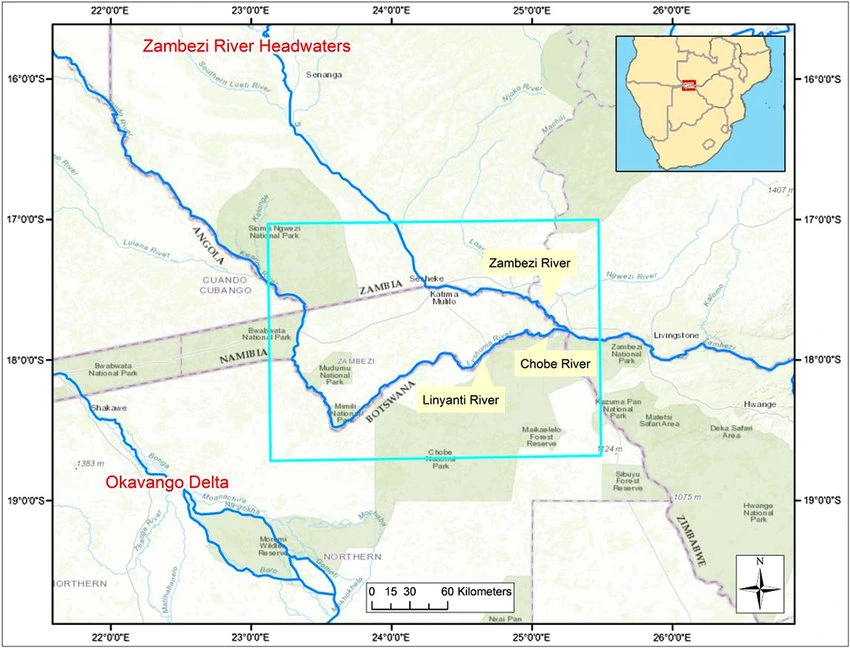
© Research Gate: Jida Wang
Once the Cuando River (or Kwando) reaches the bottom of the Linyanti marshes in northern Botswana, the river is called the Linyanti River and, further east, the Chobe River before it flows into the powerful Zambezi.
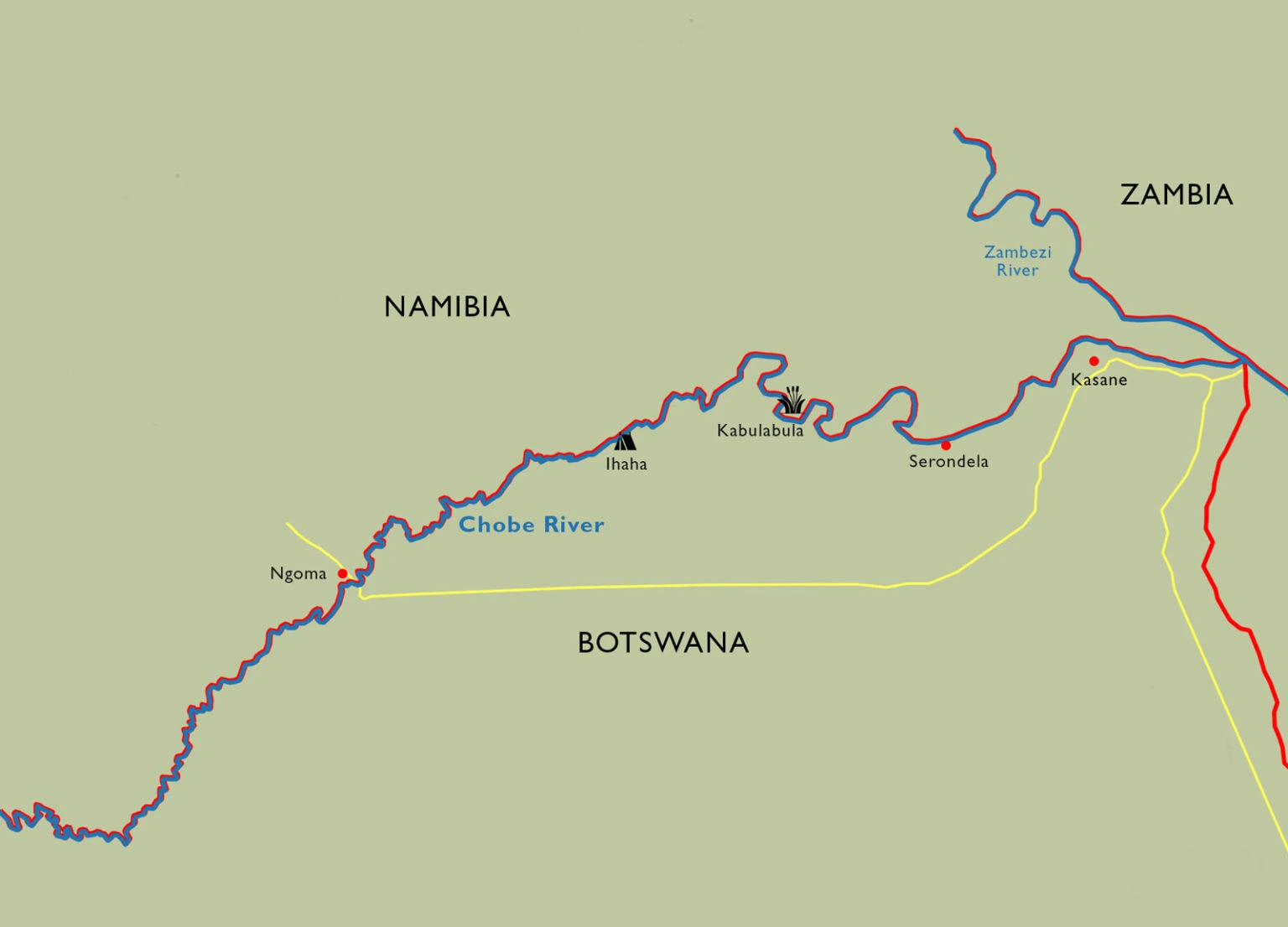
© Africa Geographic
From the highlands of Angola, The Chobe River flows in a south-easterly direction. This river ebbs and flows quite a bit before meeting either the Zambezi or The Chobe but the two meet in the east close to Kazungula at the Kasane Rapids in Chobe National Park.

Yellow-billed stork at the Kasane rapids © Sabine Stols
The catchment areas of the Chobe are in Angola and Zambia. The annual rainy season typically begins in December and lasts until the middle or end of March. The flood size varies from year to year but the river does provide a year-round source of water for all land animals in the park. It is quite interesting to see the flood levels change throughout the seasons. If you do decide to come back on safari in the land of the elephants, make sure to come on safari in both seasons so that you can also see the elephant against the water levels which makes for a great picture.
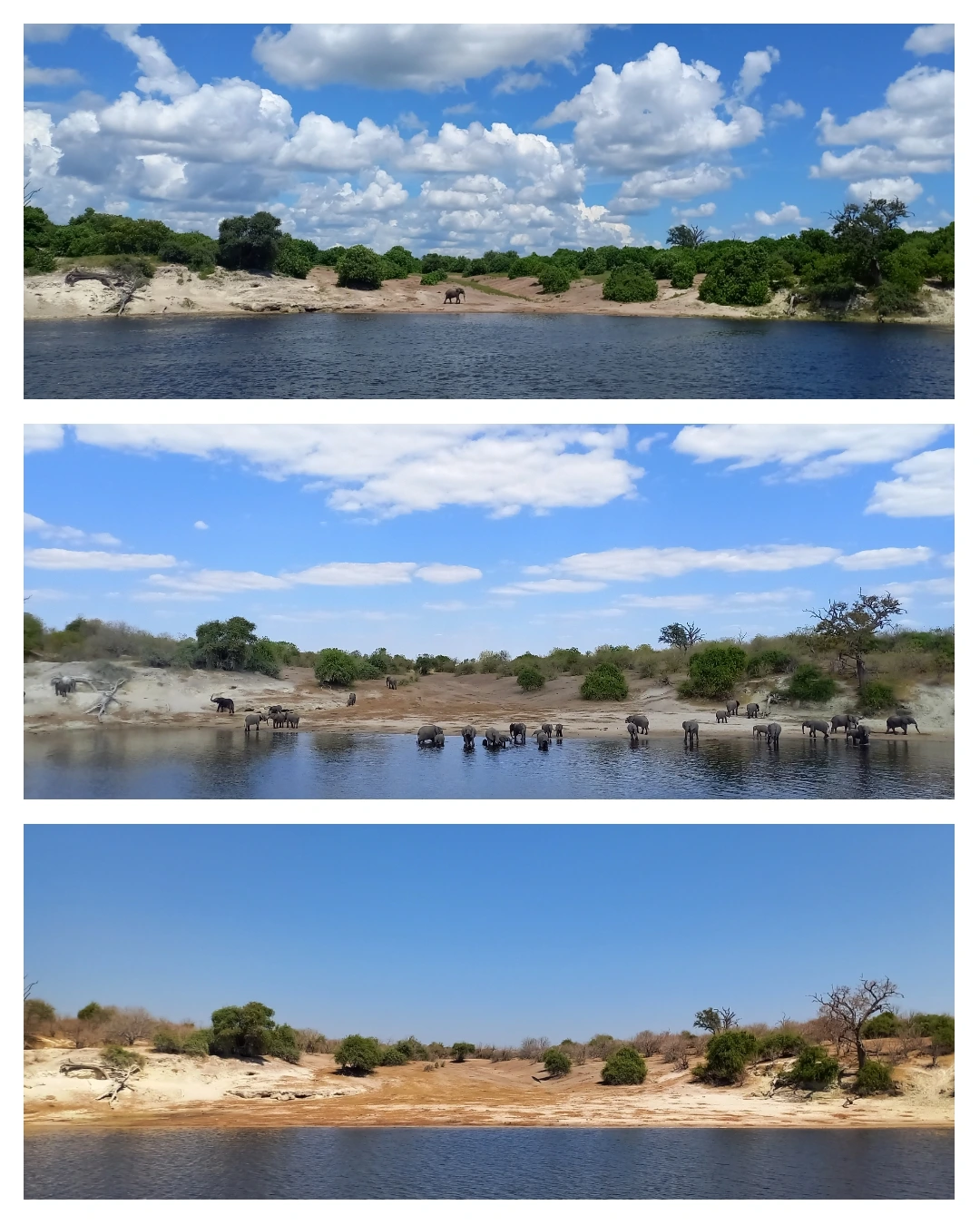
The Chobe water levels throughout the year © William Steel
Pangolin Photo Safaris offers two types of activities during their photographic safaris, the infamous Pangolin Photo Boat which you can find on the river and the Pangolin Game Drives, which takes you around the park by game vehicle for your safari. These activities happen both in the early morning and afternoon. Other activities include fishing and village tours but let’s be honest, when you’re doing a Chobe safari, river cruises are an amazing experience!
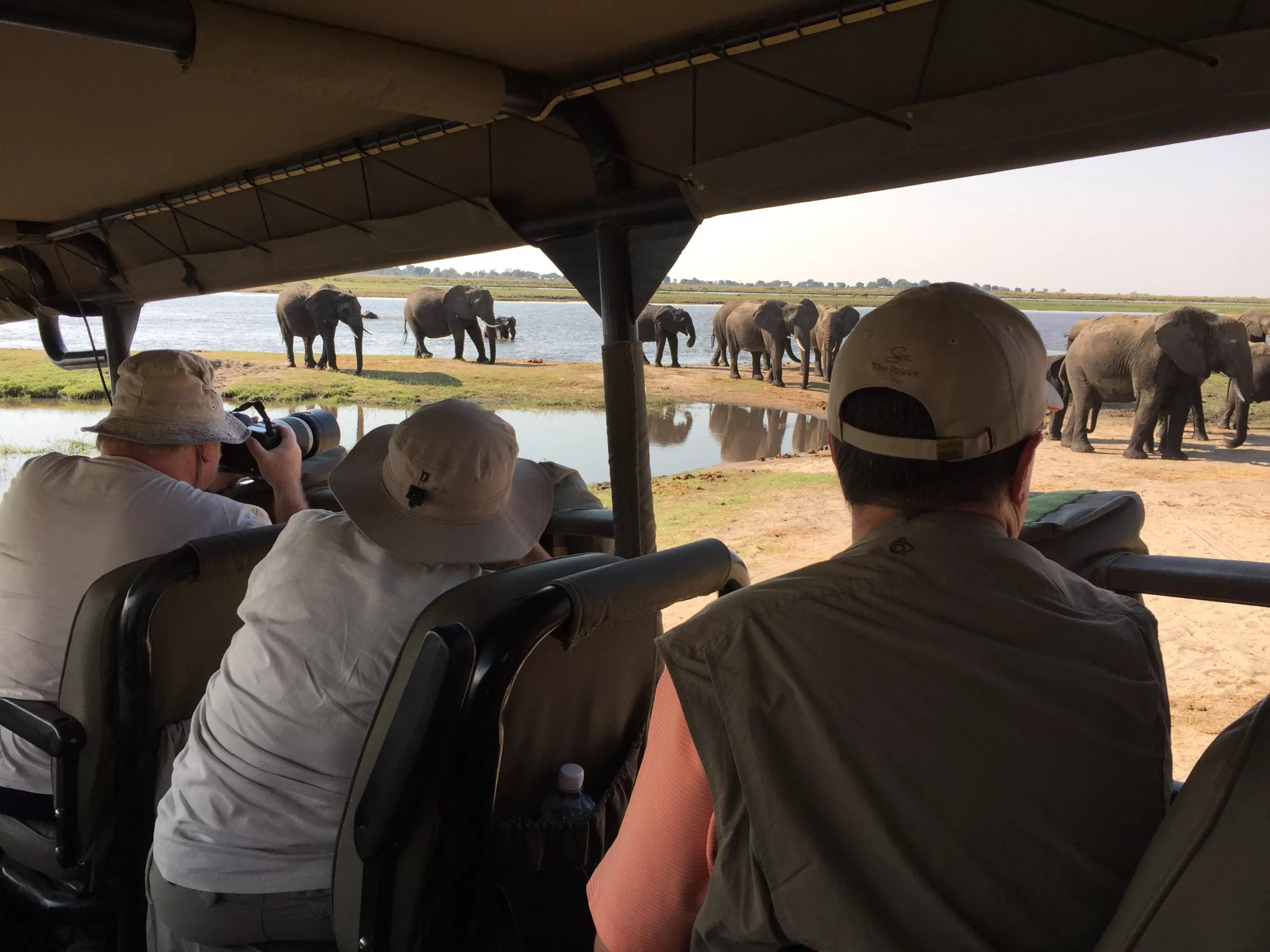
Game drive in Chobe National Park with Pangolin Photo Safaris
Chobe Game Reserve is synonymous with elephants and other water-dependent animals! This national park has an incredible population of elephants, buffalo and out-of-this-world wildlife and birding opportunities for you on your safari and game drives. Not to mention the hippos, crocodiles, lion, leopard and buck. This wildlife photography paradise can often be seen in open woodlands and along the channel’s bank, especially in the dry season so keep your eyes peeled during your game drive and enjoy one of southern Africa’s many safari treasures. Chobe is known for having one of the greatest concentrations of elephants in Botswana.
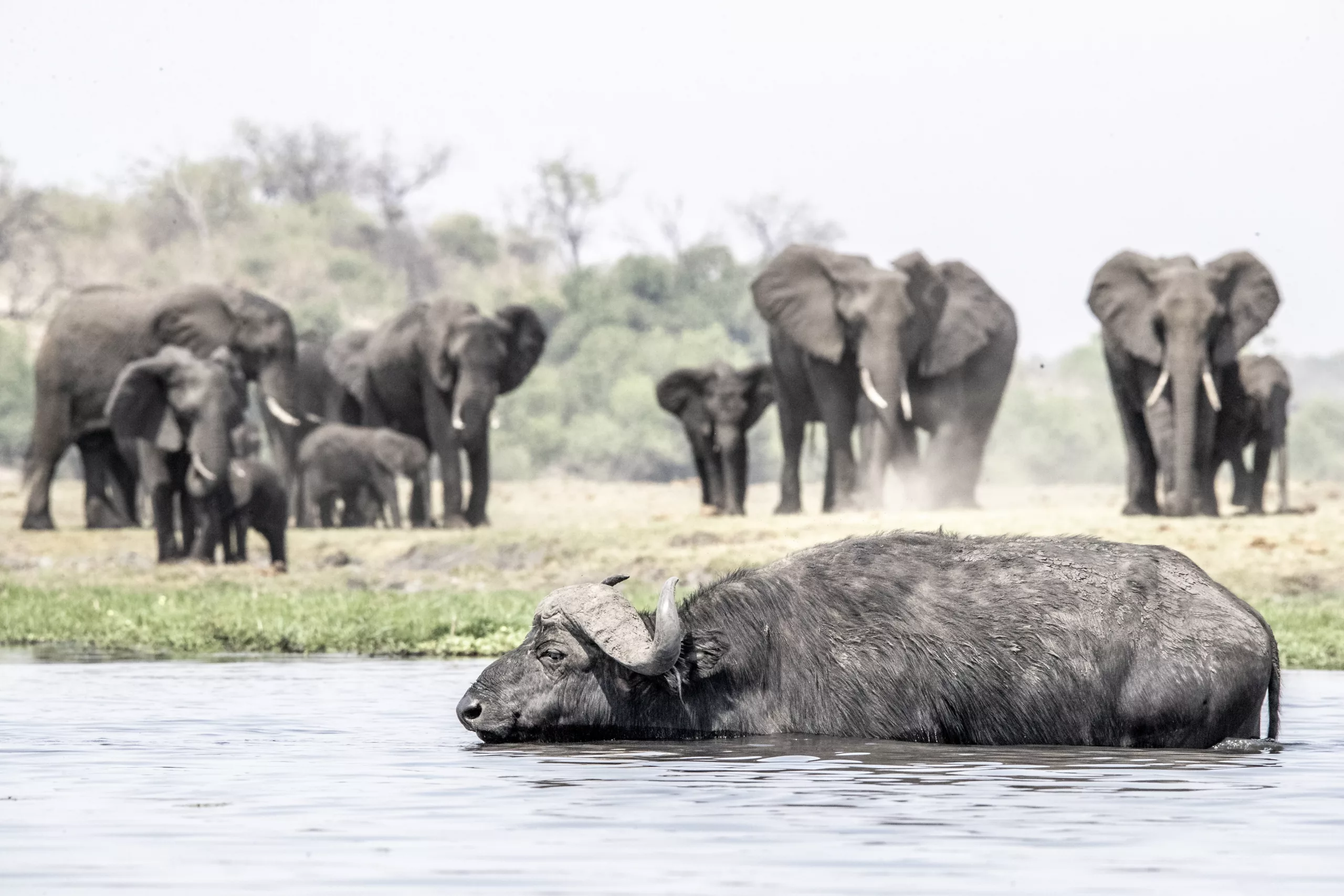
The elephant and the buffalo on the Chobe © Janine Krayer
When you are in the Kasane district of the Chobe and are doing your Chobe safari you have the chance to spot a variety of wildlife, but on your game drive keep a close eye out for lions and leopards. As you go more towards Savuti region for your safari, you can spot cheetahs, wild dog and hyenas. No matter where you do your game drives, there will always be stunning views and many animals to explore in this beautiful country.

Playful lion cub on safari © Janine Krayer
The Chobe boasts a plethora of birds and animals for you to explore and truly is a paradise for birders. However, some to look out for depending on the season are the African Fish Eagle, African Skimmer, Long-Toed Lapwing, Southern Carmine Bee-Eater, African Spoonbill, Squacco Heron, African Hobby, African Marsh Harrier, Broad-billed Roller, Collared Pratincole, Crimson-breasted Shrike, Greater Painted-Snipe, Half-Collared Kingfisher, Meyer’s Parrot, Slaty Egret, Swamp Boubou, Pel’s Fishing Owl, Yellow-bellied greenbul.

Southern Carmine Bee-Eater on the Chobe River © Charl Stols
Although Botswana and Chobe are great for bird watching throughout the year, the best months would be from November to April as this is when the greatest concentrations of migrants visit the park as well. Pangolin Photo Safaris especially love the Serondela area on the Namibian side for birding. These are also breeding months more a lot of the birds and many of the waterers can be found nesting along the river banks. So it’s time to take one of those daily flights to the small town of Kasane, Botswana and enjoy a wildlife-filled safari.
Travelling off-road in any of the national parks is strictly prohibited although it may seem like a good way to explore Africa, it’s mostly prohibited unless you have a private guide on a game drive in a private concession. Even when you are enjoying a camping safari on your own, you need to stick to the designated roads and be aware of other vehicles.
Night drives are not allowed in the Chobe National Park. Night drives are only possible in private concessions (like in the Okavango Delta) in Botswana. Take Chobe Game Lodge for example, even though they are inside the Chobe National Park, they still cannot offer a Chobe safari night drive. Please remember this when you are doing your own camping safari and that you need to back inside the park gates before dark.
Walking safaris are a great way to get up close and personal with nature and appreciate the little things that often can’t be seen from a vehicle. However, very few operators and lodges offer them within a national park. Walking safaris are not allowed in Chobe, even from Chobe Game Lodge which again, is in the national park but not a private concession. This is something you can enjoy in the Okavango delta too.
The Chobe region is a magnet for photography and photographic safari and that’s what makes a Chobe safari so memorable, especially when you can watch the wildlife from a private terrace at one of the many lodges in beautiful Botswana! The reason for this is that the abundant wildlife in The Chobe is relatively calm and habituated making it that much easier to get great shots. This is especially true from the river game viewing as you can get some incredible low-angle shots. I am sure you can already picture the wildlife situated along the banks just waiting to have their photograph taken. Some typically Africa animals to keep an eye out for in these shots are elephants, lions and buffalo.
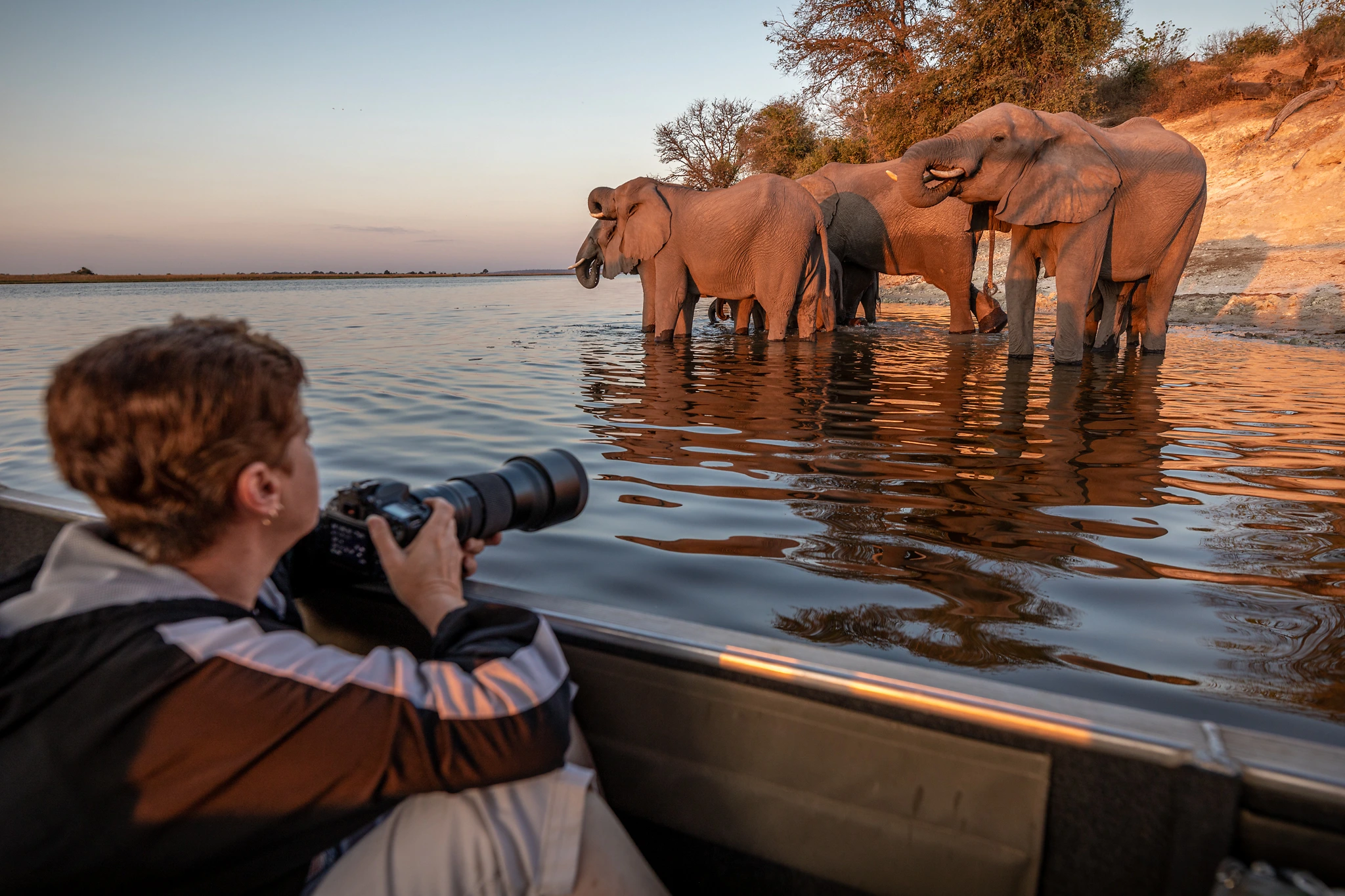
The Pangolin Photo Safari boats are perfect for low angle shots
The distance from Kasane, which is the closest town to Chobe National Park, to Victoria Falls, Zimbabwe is approximately 82km. On your drive, you will go through the Victoria Falls National Park where you will also have a chance to spot wildlife like elephant and buffalo. If you would like to go to Livingston in Zambia it would be approximately 76km so approximately the same distance.
Let’s leave the swimming in the Chobe National Park to the elephants, crocodiles and hippos! This is Africa after all! It is dangerous and not allowed to swim in the river so please refrain and rather enjoy one of the many boat safaris or on land.
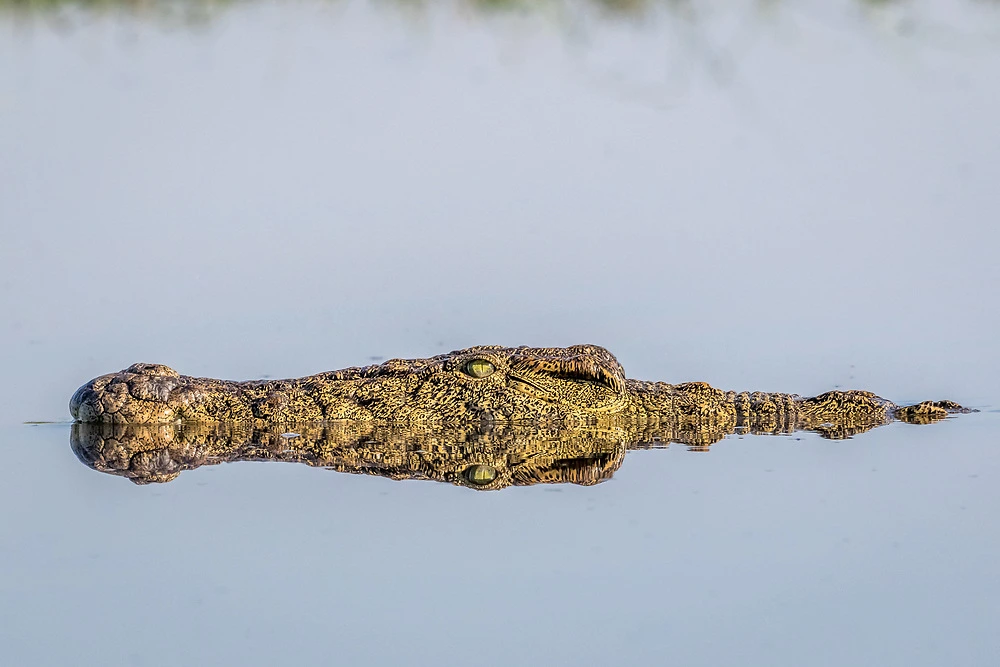
A crocodile lurks in the Chobe River © Charl Stols
There is no bad time to visit The Chobe and enjoy a Chobe safari for game viewing, every season brings something new and exciting and a great opportunity for photography. No matter the time of year, you won’t leave the Chobe disappointed, that’s for sure. The Chobe National Park really does dramatically change from season to season, whether it’s wet season with lush floodplains or dry season your trip will be memorable for many reasons.
Elephant! As we mentioned at the beginning of this blog, elephant are really one with the Chobe region. Whether you’re driving around the park, on a boat cruise or sitting at your lodge – there is bound to be an elephant waiting to show off for you.
Elephants drinking, bathing and crossing The Chobe River © Pangolin Photo Safaris

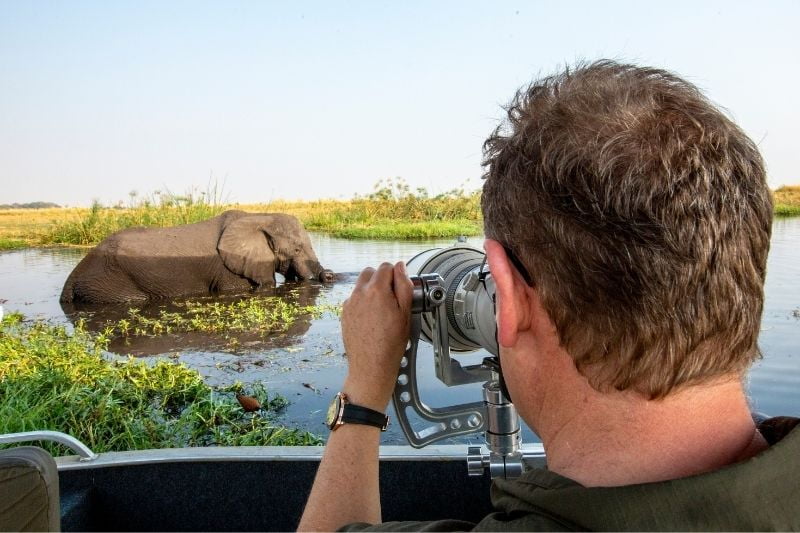
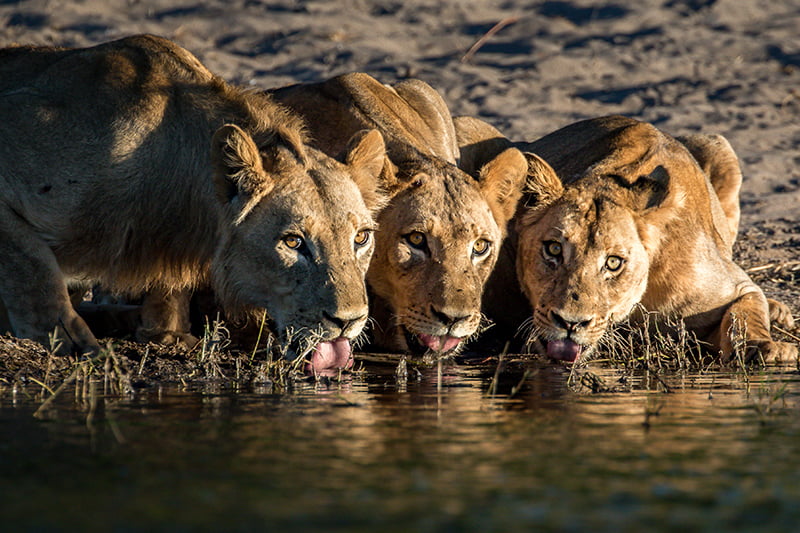
Leave A Comment
You must be logged in to post a comment.